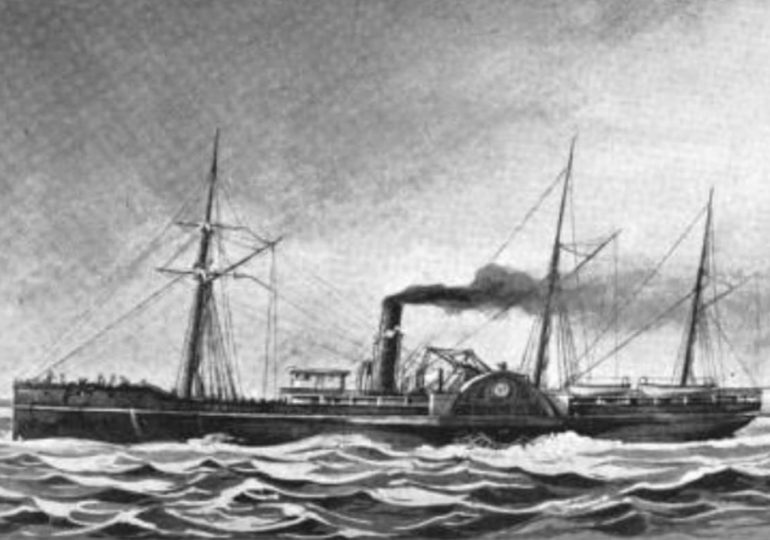LOST treasure thought to be worth $8million is set to be brought to the surface for the first time since a goldrush-era ship sunk 150 years ago.
After years of scouring the bottom of the ocean to search for gold, treasure hunters are settling the final claims to the booty on board the SS Pacific.
An artist’s description of the SS Pacific that sank in 1875
Credit: NW Shipwreck Alliance via Pen NewsShipwreck hunters trying to find the lost treasure[/caption]
Credit: NW Shipwreck Alliance via Pen NewsA fire brick believed to be part of the steam boiler, recovered from the wreck[/caption]
A wood sample from the hull
Credit: NW Shipwreck Alliance via Pen NewsRockfish crew member using a guided submersible to find the SS Pacific[/caption]
Back in 1875, the steamer vanished beneath the waves while sailing from Victoria, British Columbia, Canada, to San Francisco, in the US state of California.
The vessel was carrying an estimated $8million worth of gold and cargo.
In 2022 expert Jeff Hummel – who initially discovered the remains of SS Pacific – got exclusive salvage rights to the shipwreck along with expedition compa my Rockfish.
While a court in Seattle granted them authorisation to claim the wreckage, it also said anyone who can prove a family connection to an owner of the gold could also attempt to stake a claim.
Now, with just one claim left to settle, the sunken gold is set to surface for the first time in nearly 150 years.
Ethan Benson, general manager of Rockfish said: “There were a few claimants.
“Over the past year, we have had several conversations with the underwriters of the original cargo.
“About seven weeks ago we came to an agreement with them covering their insured portion of the cargo.
“We still have one outstanding claimant that we do not believe has a valid claim but we are working through the process with them.
“When successful, as with the underwriters, claimants receive a percentage of their valid claim and the rest goes to the salvor as a salvage award, which is generally quite large.”
Estimations as to the amount of sunken gold vary wildly, but Mr Benson says he believes it will be “worth everyone’s time”.
Salvage operations are now expected to commence this year using remotely operated underwater vehicles.
Benson added: “We spent the last year exploring the wreck site, developing our ROVs, and preparing our plans for artefact recovery, which requires a lot of sensitivity and care.
“With that, we plan to begin recovery of the debris field with our new ROVs later this year.
“We feel very confident about where we are. We have been very methodical every step of the way and because of that we feel prepared for what is ahead.”
The SS Pacific sank with more than 300 people on board.
It was captained by Jefferson Davis Howell who commanded a rebel gunboat during the US Civil War.
The vessel collided with another sailing ship called Orpheus – and sank with all the people on board and the entire cargo near south of Cape Flattery, Washington.
Only two people are said to have survived the disaster.
Others aboard included some of the elite of the Pacific Northwest, gold miners going home for winter and some 41 people identified only as “Chinamen”.
Since children didn’t pay to sail, they were likely undercounted, and several additional passengers had rushed aboard at the last moment without buying a ticket.
No human remains have been detected at the wreck site yet, and its discoverers think it’s unlikely any will be, given the depth of the water and the strong currents in the area.
The Orpheus, which survived the initial collision, had steered into the Pacific’s path after its second mate mistook her lights for those of the Cape Flattery lighthouse.
She too wrecked later that night, though her crew made it ashore.
It was the deadliest maritime disaster in the history of the western US.
Sonar scanner being used on the wreck
A side scan sonar of the paddle wheels
A computer-generated image of the paddle wheel
Leave a comment








